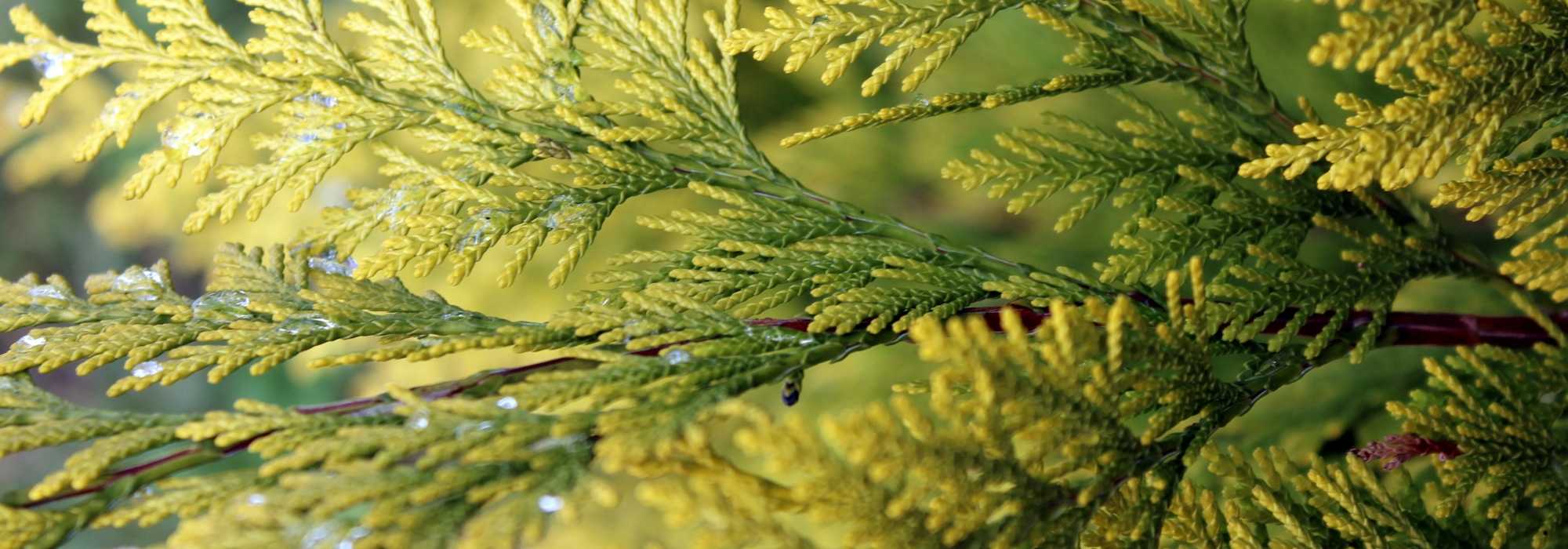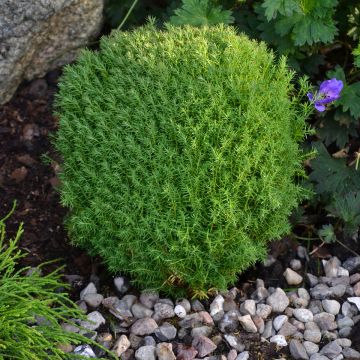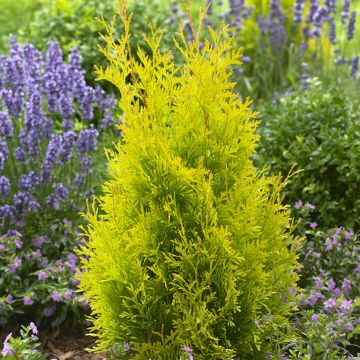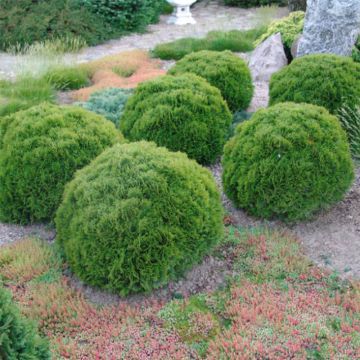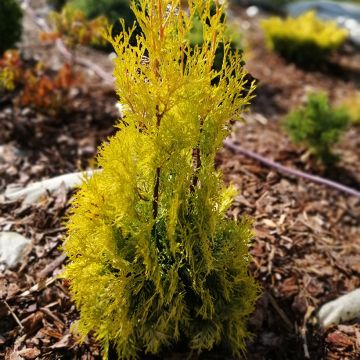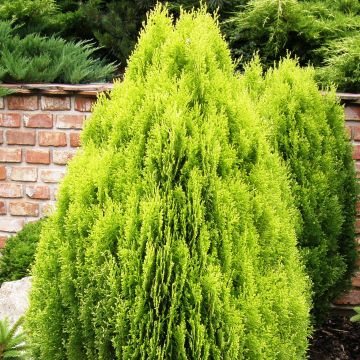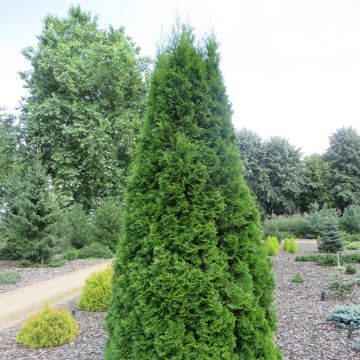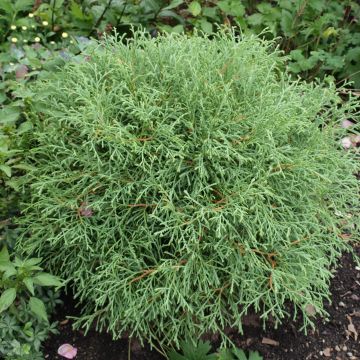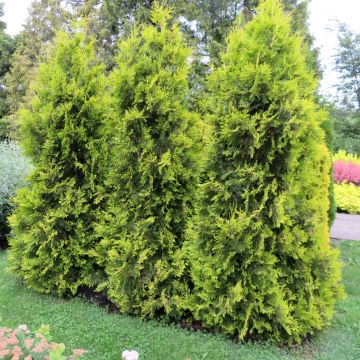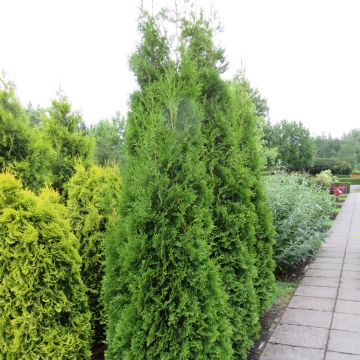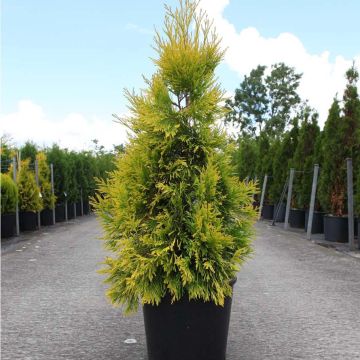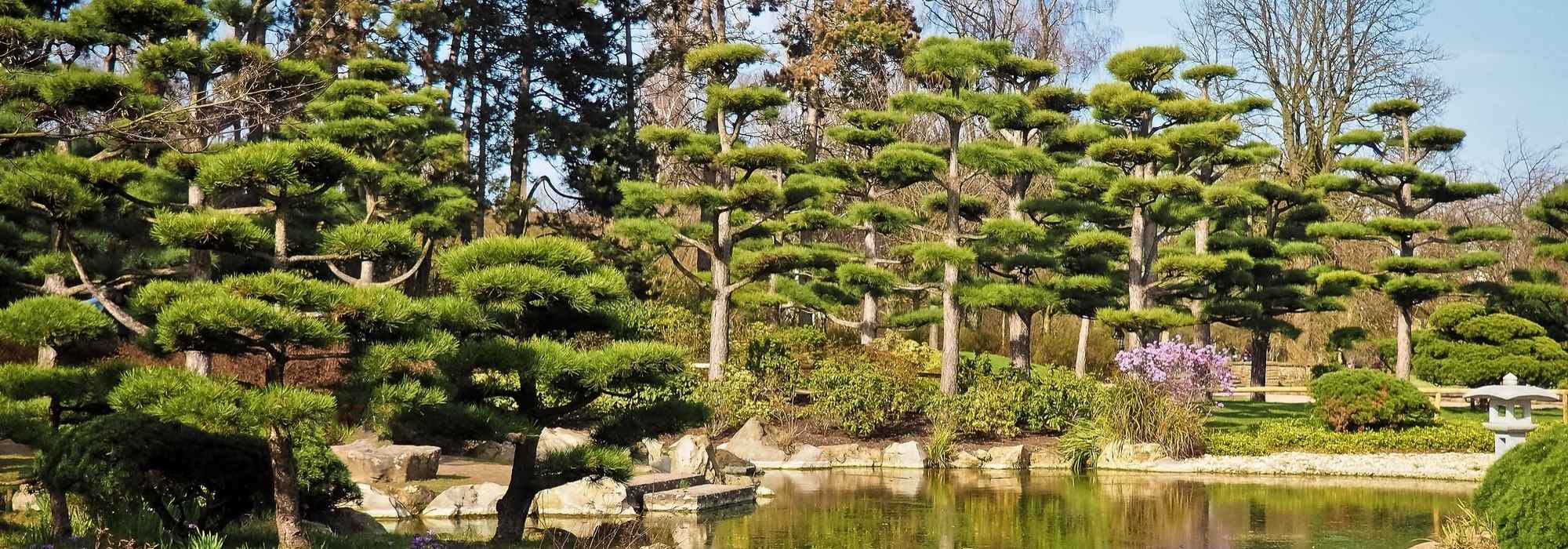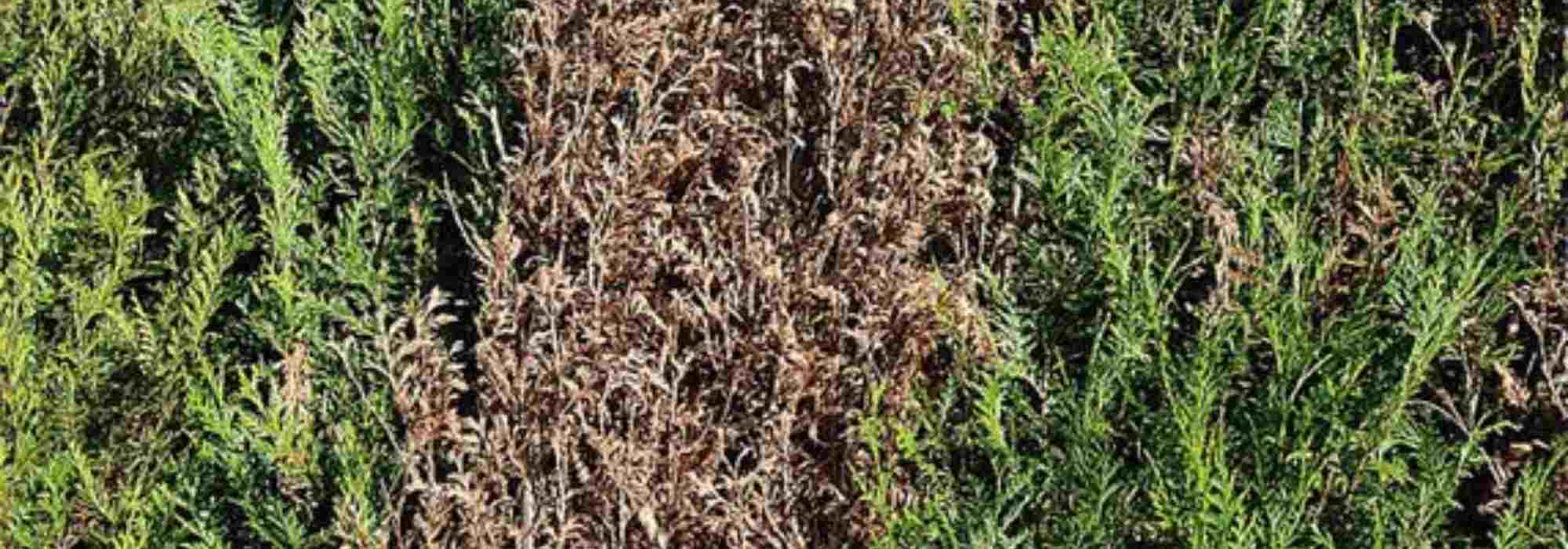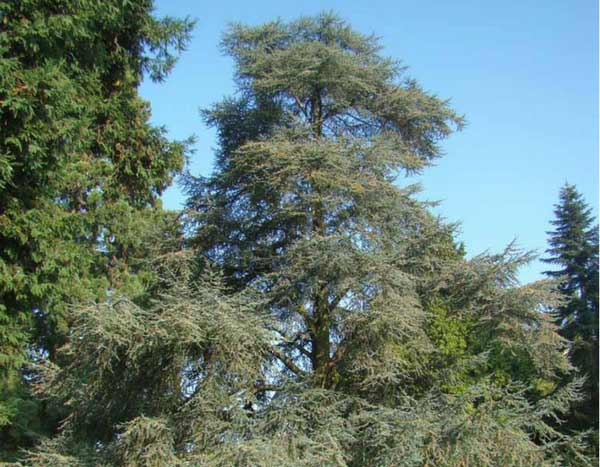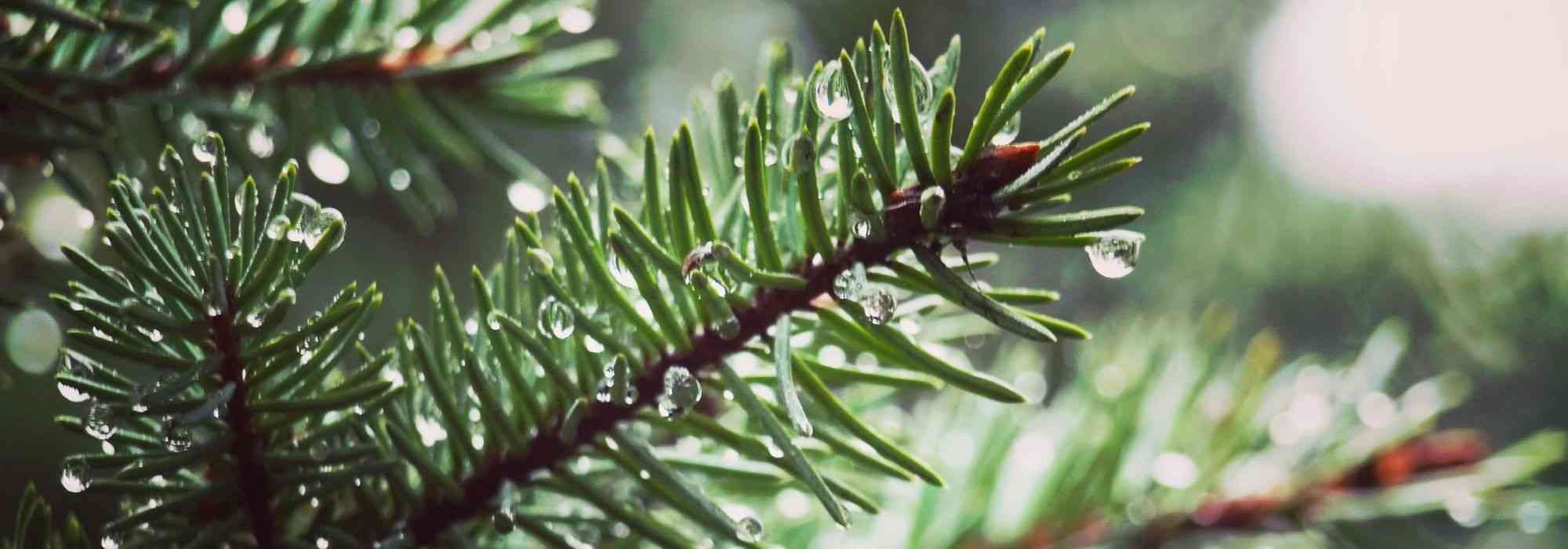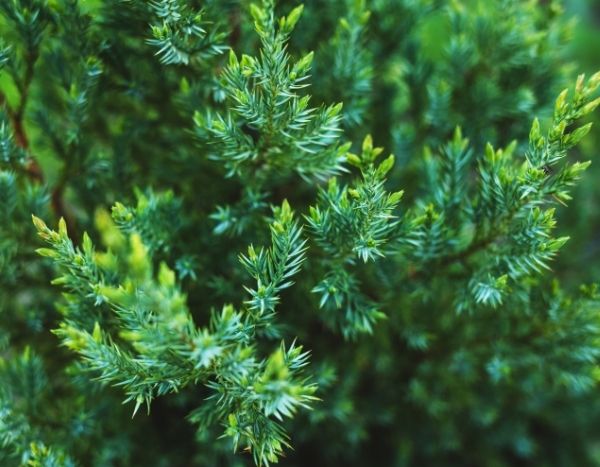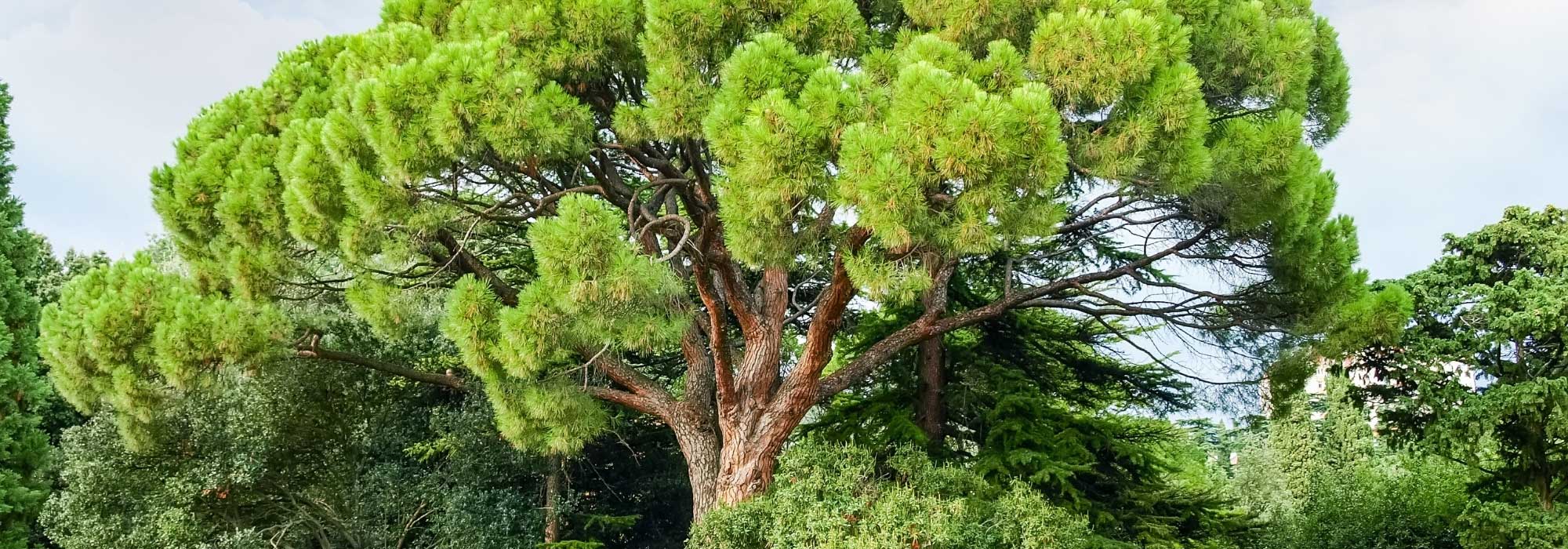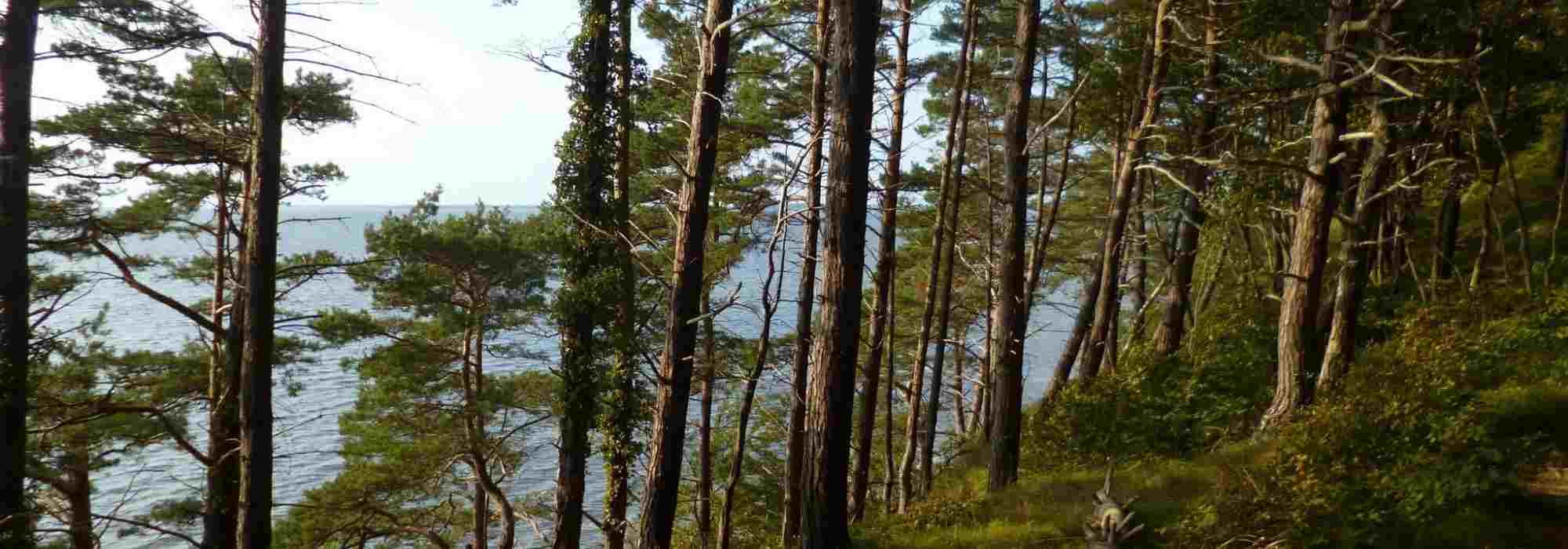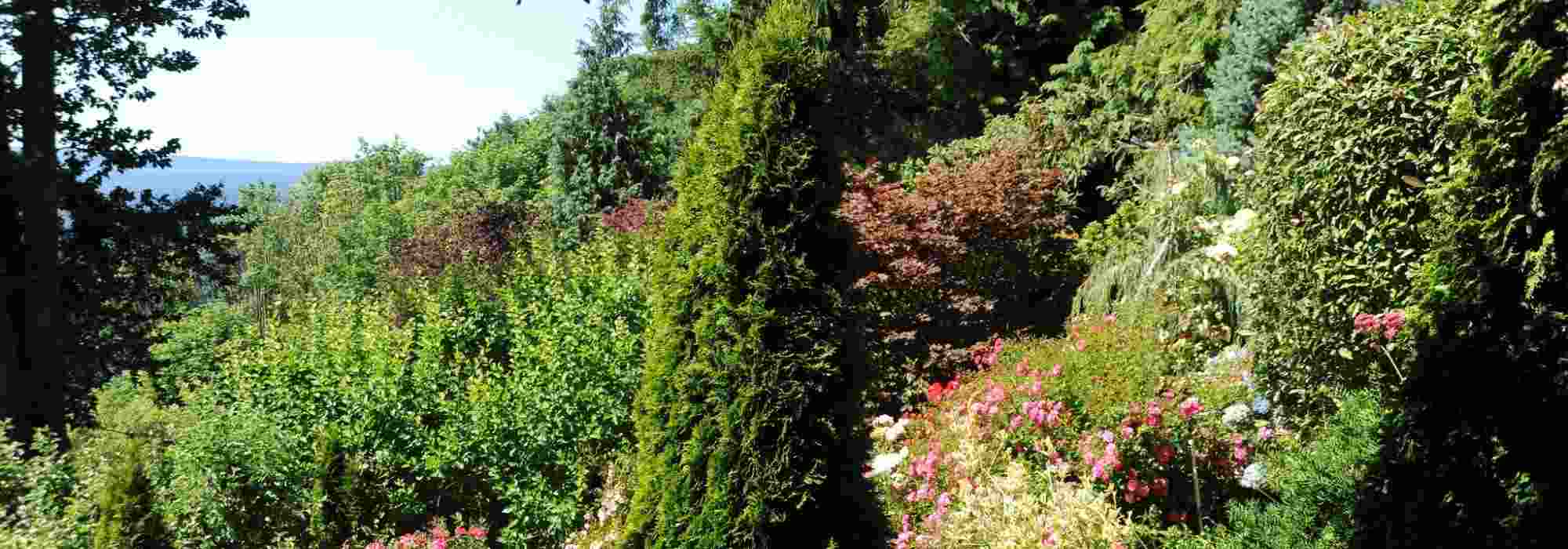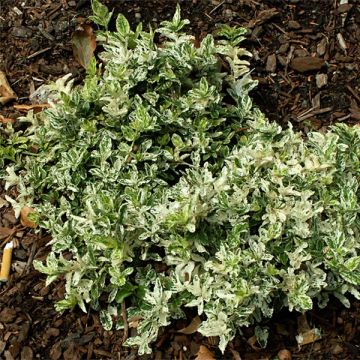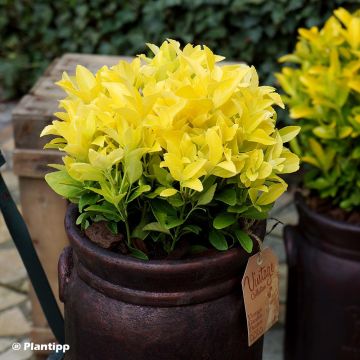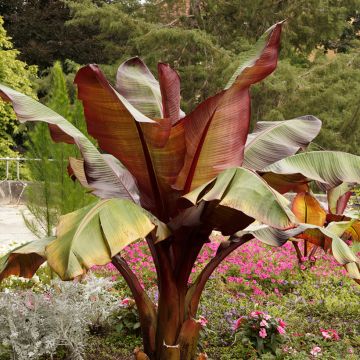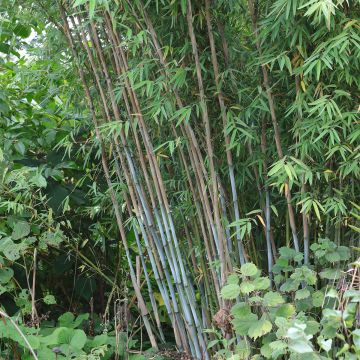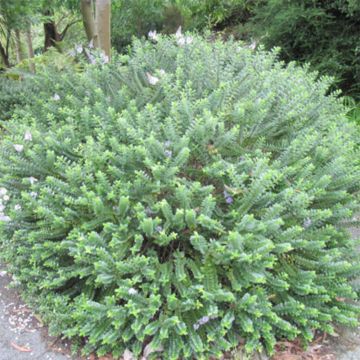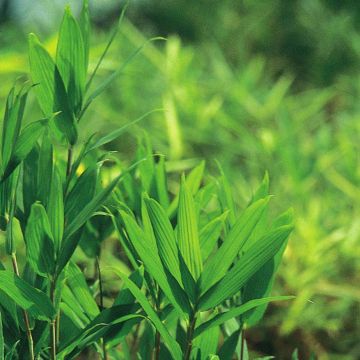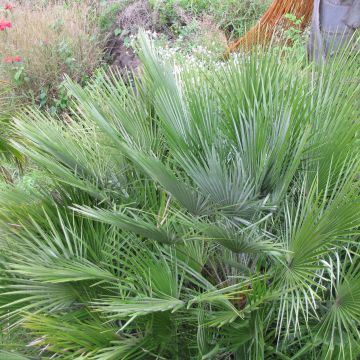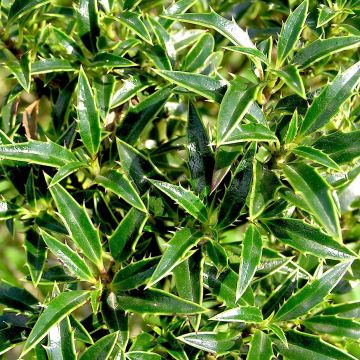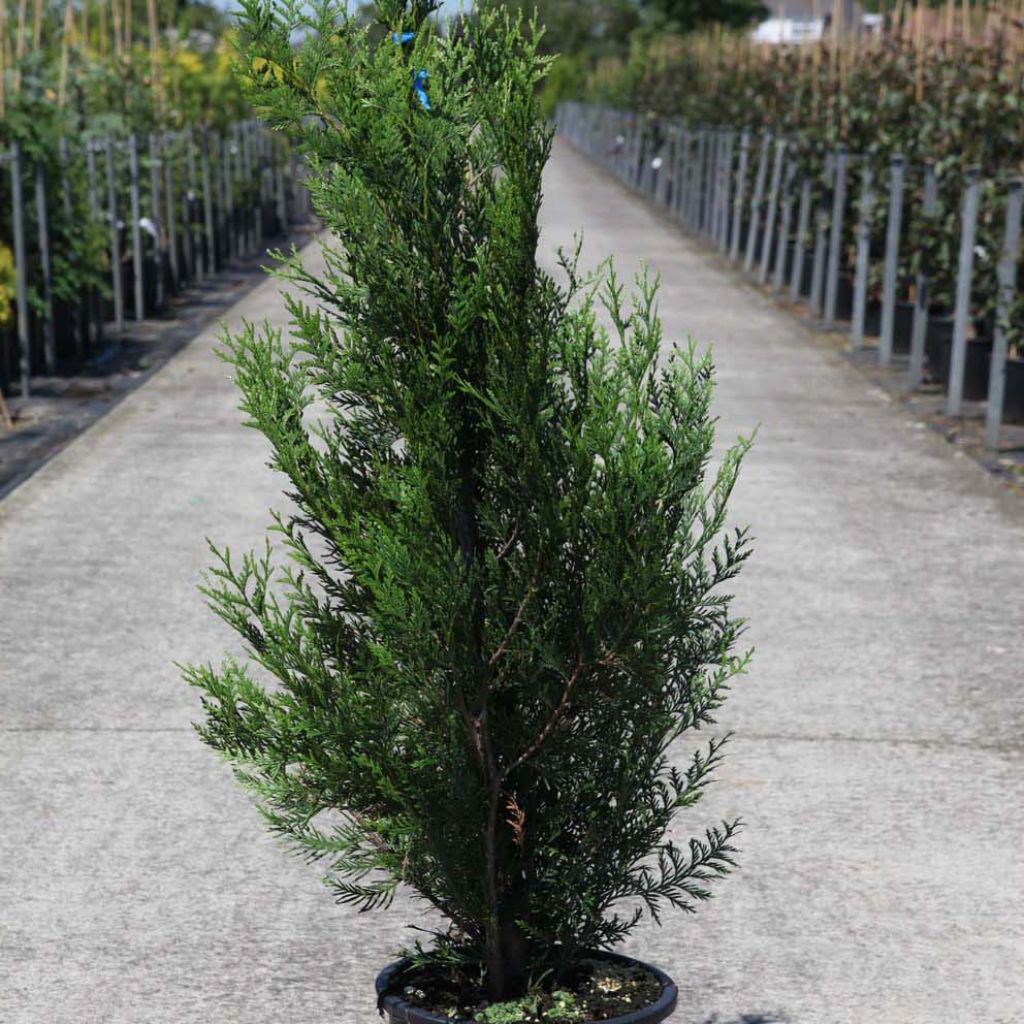

Thuja plicata Atrovirens - Western Red Cedar for hedging
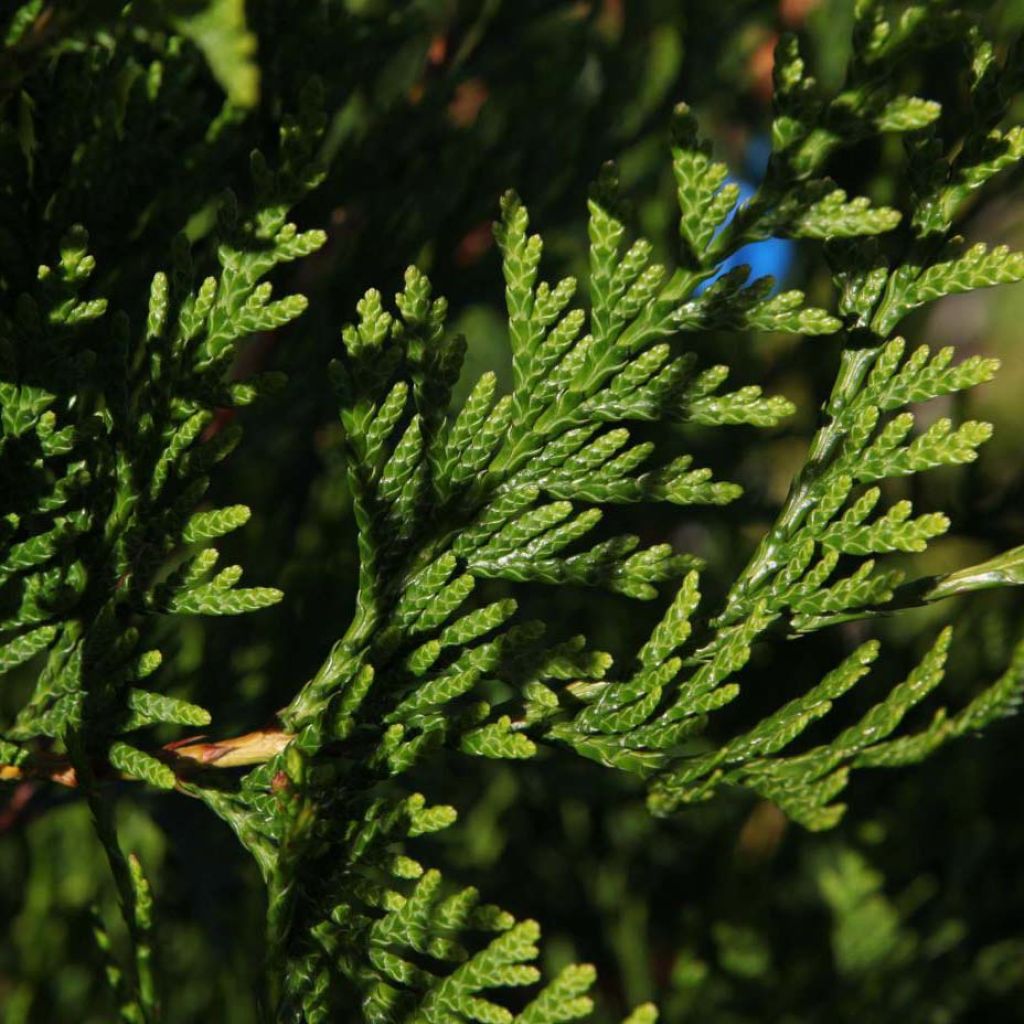

Thuja plicata Atrovirens - Western Red Cedar for hedging
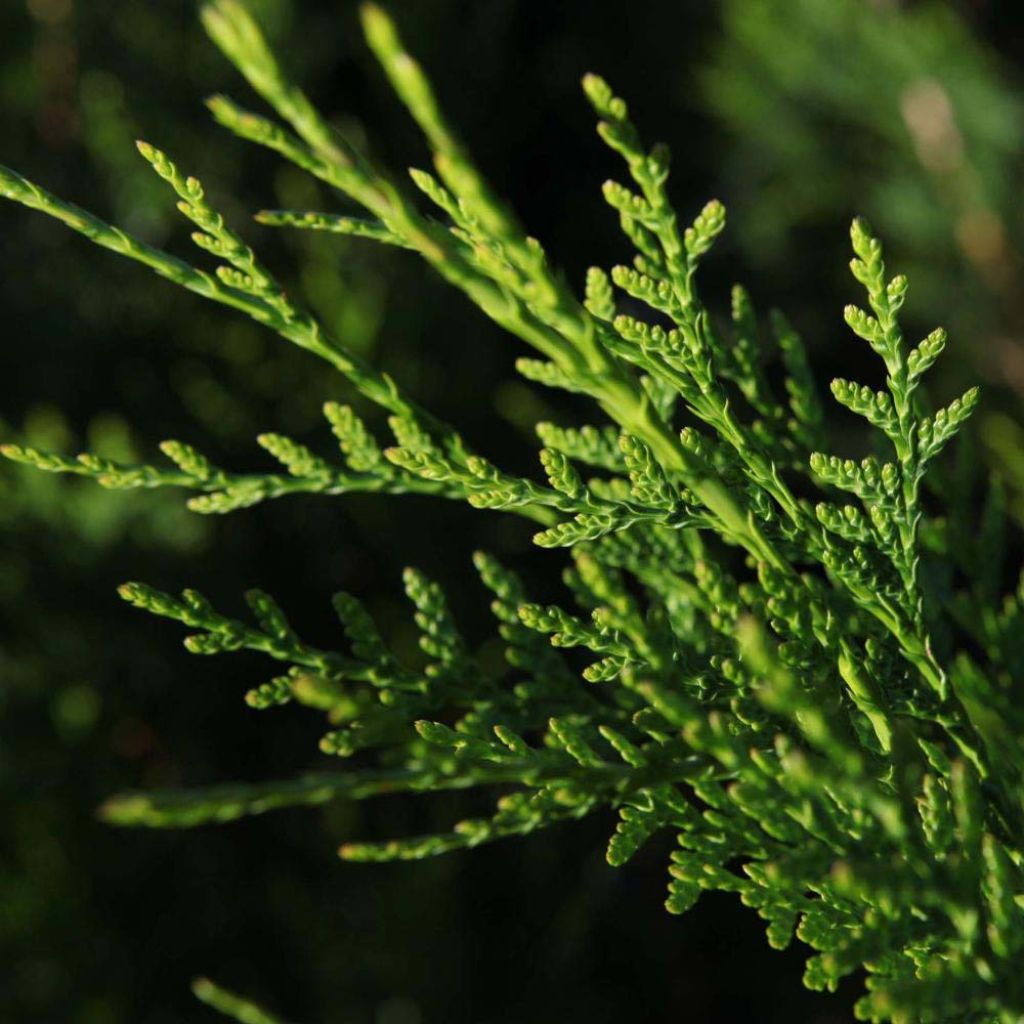

Thuja plicata Atrovirens - Western Red Cedar for hedging
Thuja plicata Atrovirens - Western Red Cedar for hedging
Thuja plicata Atrovirens
Western Red Cedar, Pacific Red Cedar, Giant Red Cedar
They are beautiful, very well packaged perfect
laurence, 21/06/2025
Special offer!
Receive a €20 voucher for any order over €90 (excluding delivery costs, credit notes, and plastic-free options)!
1- Add your favorite plants to your cart.
2- Once you have reached €90, confirm your order (you can even choose the delivery date!).
3- As soon as your order is shipped, you will receive an email containing your voucher code, valid for 3 months (90 days).
Your voucher is unique and can only be used once, for any order with a minimum value of €20, excluding delivery costs.
Can be combined with other current offers, non-divisible and non-refundable.
Home or relay delivery (depending on size and destination)
Schedule delivery date,
and select date in basket
This plant carries a 24 months recovery warranty
More information
We guarantee the quality of our plants for a full growing cycle, and will replace at our expense any plant that fails to recover under normal climatic and planting conditions.

Does this plant fit my garden?
Set up your Plantfit profile →
Description
The Thuja plicata 'Atrovirens' is one of the most commonly planted varieties of giant Californian Thuja for hedges in Europe. Perfectly hardy, it withstands repeated pruning and grows rapidly, allowing it to create dense, evergreen screens that are effective against both wind and for privacy. It is easy to cultivate in any deep, soil that does not dry out in summer. Depending on your budget, the length of your hedge, your patience, and the time you can dedicate to gardening, different types of products are available to you.
- For an economical Thuja hedge, opt for 9 cm (3.5 in) pots, which can be planted all year round. The soil preparation should be thorough (careful weeding, removal of all roots, planting trench), and it is advisable to lay a sheet at the base of the shrubs to limit the germination of weeds and the need for weeding, until they establish themselves. Once established, they grow rapidly and will quickly catch up with their counterparts grown in pots. This is the most economical solution when creating a hedge of at least 10 m (32.8 ft) in length.
- For a fast-growing Thuja hedge or to fill in an existing hedge, choose shrubs in 2, 4, 5, 7.5, or even 10-litre pots. Plants in pots can be planted all year round, except during frosty periods or heatwaves. They should be planted in individual planting holes, like any other shrubs in the garden. While they will have an immediate effect, they will take a little longer to "get going" and will require more frequent and regular watering, especially when it is dry in summer.
Respect the proper planting distance according to the size of your plant! Allow a space of 60 cm (23.6 in) between each plant for shrubs in pots, 70 to 80 cm (31.5 in) for plants in 2 or 3 litre pots, 80 cm (31.5 in) to 1 m (3.3 ft) for pots from 4 to 10 litres, and 1 m (3.3 ft) to 1.2 m (3.3 ft) for pots larger than 10 litres.
The Thuja plicata is also known as Giant Thuja or Western Red Cedar. It is an evergreen conifer from the cypress family native to the northwest of North America, particularly northern California. In its natural environment, this giant reaches a height of 50 to 60 m (196.9 ft) and can develop a trunk with a diameter of 3 m (9.8 ft) when it reaches the end of its life at the age of around 700 years. It has long been exploited for its soft and durable wood, known in Europe as 'Red Cedar'. This giant thrives in dense forests (California is not just an arid desert), but it also grows along riverbanks or in marshy forests. It is well-suited to shade, even dense shade, and thrives in humid conditions.
The 'Atrovirens' variety is distinguished by its smaller size, very compact growth, and particularly dense foliage. The tree has a regular pyramidal shape. Its growth is rapid, reaching a height of about 20 m (65.6 ft) and a spread of 7 m (23 ft) if not regularly pruned. In our gardens, planting it in a dense hedge and annual pruning keep it to more reasonable proportions, around 5 to 7 m (16.4 to 23 ft) in height and 1 m (3.3 ft) in spread. This conifer has flattened branches covered with scale-like leaves. The leaves are overlapping, giving the branches a flat appearance. The foliage is dark green and glossy throughout the year.
The 'Atrovirens' Thuja, with its easy cultivation, high tolerance for pruning, and dense growth, is a proven variety, prefering cool climates. It adapts to almost any conditions except dense shade and dry soils. Its density protects the garden all year round, and its dark form enhances any flower bed, particularly those with white blooms (mock oranges, serviceberries, 'Fairy Snow' rose...) and light (Salix cinerea, Salix exigua) or golden foliage (Ginkgo biloba fastigiata 'Blagon', Chamaecyparis lawsoniana 'Ivonne').
Thuja plicata Atrovirens - Western Red Cedar for hedging in pictures
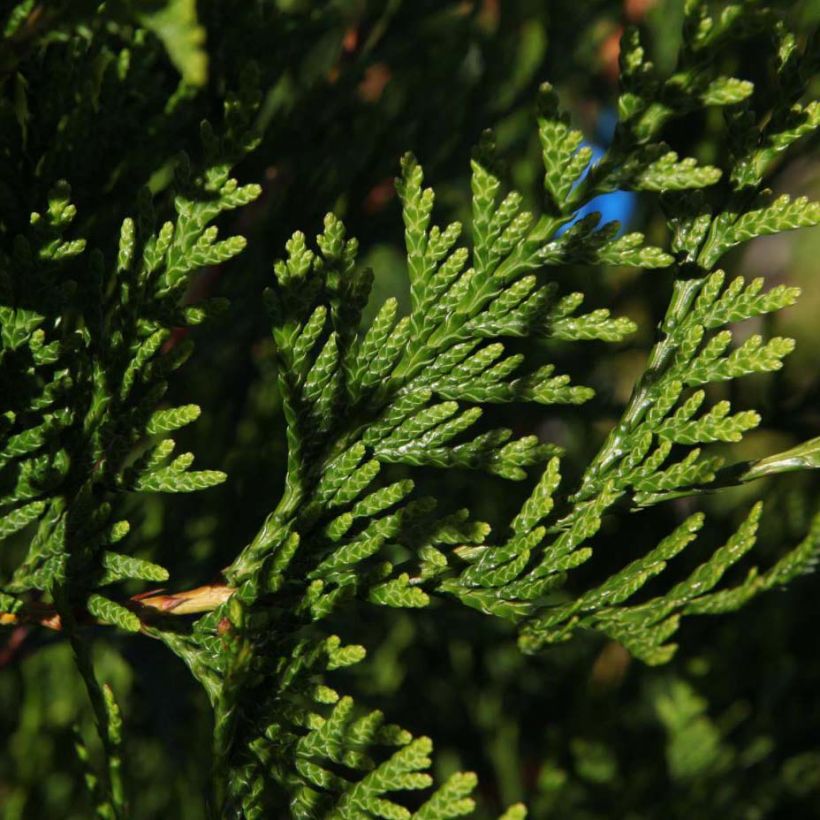

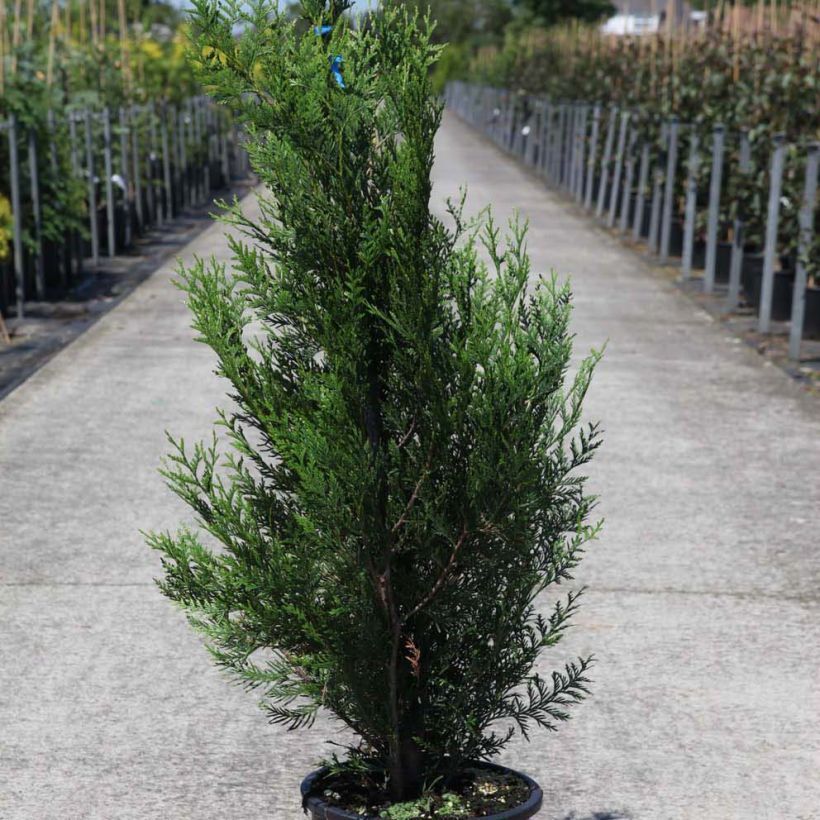

Plant habit
Flowering
Foliage
Botanical data
Thuja
plicata
Atrovirens
Cupressaceae
Western Red Cedar, Pacific Red Cedar, Giant Red Cedar
Cultivar or hybrid
Other Thuya - Thuja
View all →Planting and care
The Thuja plicata 'Atrovirens' should be planted from September to November and from February to June in deep, garden soil that is loose and not too heavy. It can be alkaline soil, close to neutral or even slightly acidic and moisture-retaining. This variety does not tolerate drought. It will thrive in a sunny and open sites. Soak the root balls well before planting. If necessary, add organic soil improver to the planting hole and water generously in the first few years, and in the case of a prolonged drought. In very poor soil, you can apply a special conifer fertilizer every year in April and cultivate the soil in summer. This hardy conifer (down to -25°C at least) can be pruned up to twice a year, in April and August. It can produce new shoots even on old wood.
Its enemies are mainly red spider mites and scale insects, which thrive in hot and dry weather. Armillaria or root rot can also develop on the roots and caker can develop on its branches.
Planting period
Intended location
Care
Planting & care advice
-
, onOrder confirmed
Reply from on Promesse de fleurs
Similar products
Haven't found what you were looking for?
Hardiness is the lowest winter temperature a plant can endure without suffering serious damage or even dying. However, hardiness is affected by location (a sheltered area, such as a patio), protection (winter cover) and soil type (hardiness is improved by well-drained soil).

Photo Sharing Terms & Conditions
In order to encourage gardeners to interact and share their experiences, Promesse de fleurs offers various media enabling content to be uploaded onto its Site - in particular via the ‘Photo sharing’ module.
The User agrees to refrain from:
- Posting any content that is illegal, prejudicial, insulting, racist, inciteful to hatred, revisionist, contrary to public decency, that infringes on privacy or on the privacy rights of third parties, in particular the publicity rights of persons and goods, intellectual property rights, or the right to privacy.
- Submitting content on behalf of a third party;
- Impersonate the identity of a third party and/or publish any personal information about a third party;
In general, the User undertakes to refrain from any unethical behaviour.
All Content (in particular text, comments, files, images, photos, videos, creative works, etc.), which may be subject to property or intellectual property rights, image or other private rights, shall remain the property of the User, subject to the limited rights granted by the terms of the licence granted by Promesse de fleurs as stated below. Users are at liberty to publish or not to publish such Content on the Site, notably via the ‘Photo Sharing’ facility, and accept that this Content shall be made public and freely accessible, notably on the Internet.
Users further acknowledge, undertake to have ,and guarantee that they hold all necessary rights and permissions to publish such material on the Site, in particular with regard to the legislation in force pertaining to any privacy, property, intellectual property, image, or contractual rights, or rights of any other nature. By publishing such Content on the Site, Users acknowledge accepting full liability as publishers of the Content within the meaning of the law, and grant Promesse de fleurs, free of charge, an inclusive, worldwide licence for the said Content for the entire duration of its publication, including all reproduction, representation, up/downloading, displaying, performing, transmission, and storage rights.
Users also grant permission for their name to be linked to the Content and accept that this link may not always be made available.
By engaging in posting material, Users consent to their Content becoming automatically accessible on the Internet, in particular on other sites and/or blogs and/or web pages of the Promesse de fleurs site, including in particular social pages and the Promesse de fleurs catalogue.
Users may secure the removal of entrusted content free of charge by issuing a simple request via our contact form.
The flowering period indicated on our website applies to countries and regions located in USDA zone 8 (France, the United Kingdom, Ireland, the Netherlands, etc.)
It will vary according to where you live:
- In zones 9 to 10 (Italy, Spain, Greece, etc.), flowering will occur about 2 to 4 weeks earlier.
- In zones 6 to 7 (Germany, Poland, Slovenia, and lower mountainous regions), flowering will be delayed by 2 to 3 weeks.
- In zone 5 (Central Europe, Scandinavia), blooming will be delayed by 3 to 5 weeks.
In temperate climates, pruning of spring-flowering shrubs (forsythia, spireas, etc.) should be done just after flowering.
Pruning of summer-flowering shrubs (Indian Lilac, Perovskia, etc.) can be done in winter or spring.
In cold regions as well as with frost-sensitive plants, avoid pruning too early when severe frosts may still occur.
The planting period indicated on our website applies to countries and regions located in USDA zone 8 (France, United Kingdom, Ireland, Netherlands).
It will vary according to where you live:
- In Mediterranean zones (Marseille, Madrid, Milan, etc.), autumn and winter are the best planting periods.
- In continental zones (Strasbourg, Munich, Vienna, etc.), delay planting by 2 to 3 weeks in spring and bring it forward by 2 to 4 weeks in autumn.
- In mountainous regions (the Alps, Pyrenees, Carpathians, etc.), it is best to plant in late spring (May-June) or late summer (August-September).
The harvesting period indicated on our website applies to countries and regions in USDA zone 8 (France, England, Ireland, the Netherlands).
In colder areas (Scandinavia, Poland, Austria...) fruit and vegetable harvests are likely to be delayed by 3-4 weeks.
In warmer areas (Italy, Spain, Greece, etc.), harvesting will probably take place earlier, depending on weather conditions.
The sowing periods indicated on our website apply to countries and regions within USDA Zone 8 (France, UK, Ireland, Netherlands).
In colder areas (Scandinavia, Poland, Austria...), delay any outdoor sowing by 3-4 weeks, or sow under glass.
In warmer climes (Italy, Spain, Greece, etc.), bring outdoor sowing forward by a few weeks.






























